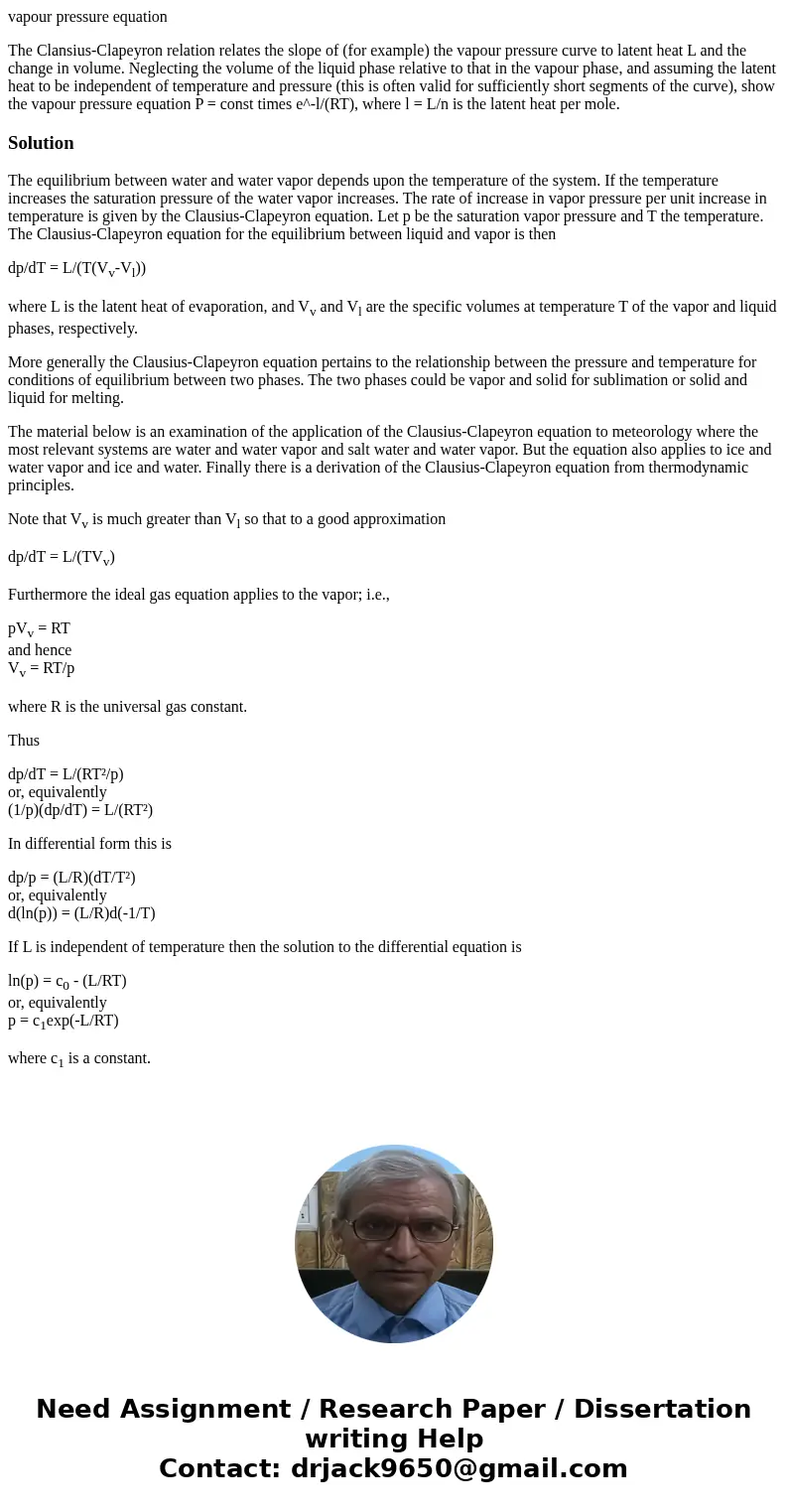vapour pressure equation The ClansiusClapeyron relation rela
vapour pressure equation
The Clansius-Clapeyron relation relates the slope of (for example) the vapour pressure curve to latent heat L and the change in volume. Neglecting the volume of the liquid phase relative to that in the vapour phase, and assuming the latent heat to be independent of temperature and pressure (this is often valid for sufficiently short segments of the curve), show the vapour pressure equation P = const times e^-l/(RT), where l = L/n is the latent heat per mole.Solution
The equilibrium between water and water vapor depends upon the temperature of the system. If the temperature increases the saturation pressure of the water vapor increases. The rate of increase in vapor pressure per unit increase in temperature is given by the Clausius-Clapeyron equation. Let p be the saturation vapor pressure and T the temperature. The Clausius-Clapeyron equation for the equilibrium between liquid and vapor is then
dp/dT = L/(T(Vv-Vl))
where L is the latent heat of evaporation, and Vv and Vl are the specific volumes at temperature T of the vapor and liquid phases, respectively.
More generally the Clausius-Clapeyron equation pertains to the relationship between the pressure and temperature for conditions of equilibrium between two phases. The two phases could be vapor and solid for sublimation or solid and liquid for melting.
The material below is an examination of the application of the Clausius-Clapeyron equation to meteorology where the most relevant systems are water and water vapor and salt water and water vapor. But the equation also applies to ice and water vapor and ice and water. Finally there is a derivation of the Clausius-Clapeyron equation from thermodynamic principles.
Note that Vv is much greater than Vl so that to a good approximation
dp/dT = L/(TVv)
Furthermore the ideal gas equation applies to the vapor; i.e.,
pVv = RT
and hence
Vv = RT/p
where R is the universal gas constant.
Thus
dp/dT = L/(RT²/p)
or, equivalently
(1/p)(dp/dT) = L/(RT²)
In differential form this is
dp/p = (L/R)(dT/T²)
or, equivalently
d(ln(p)) = (L/R)d(-1/T)
If L is independent of temperature then the solution to the differential equation is
ln(p) = c0 - (L/RT)
or, equivalently
p = c1exp(-L/RT)
where c1 is a constant.

 Homework Sourse
Homework Sourse